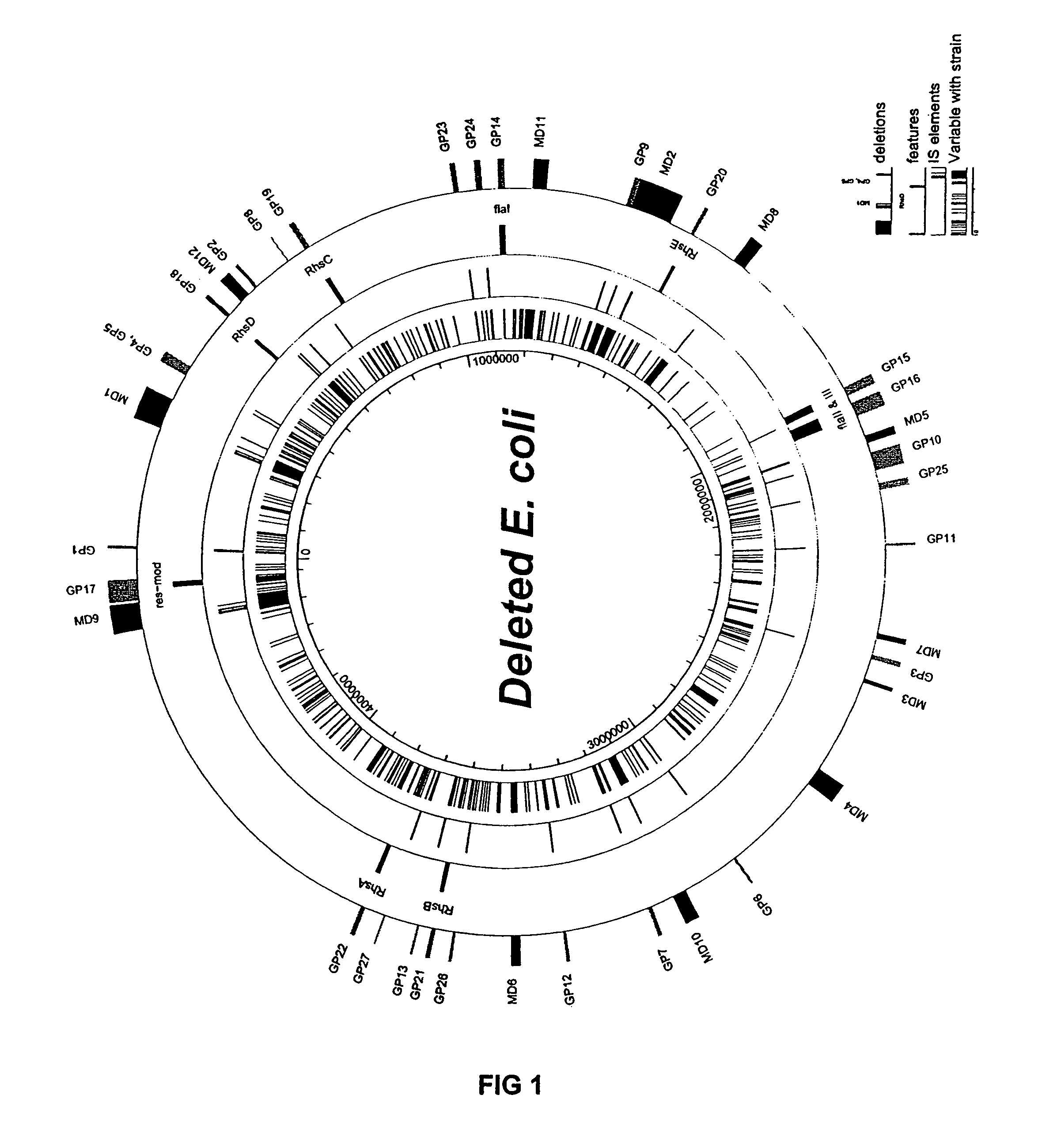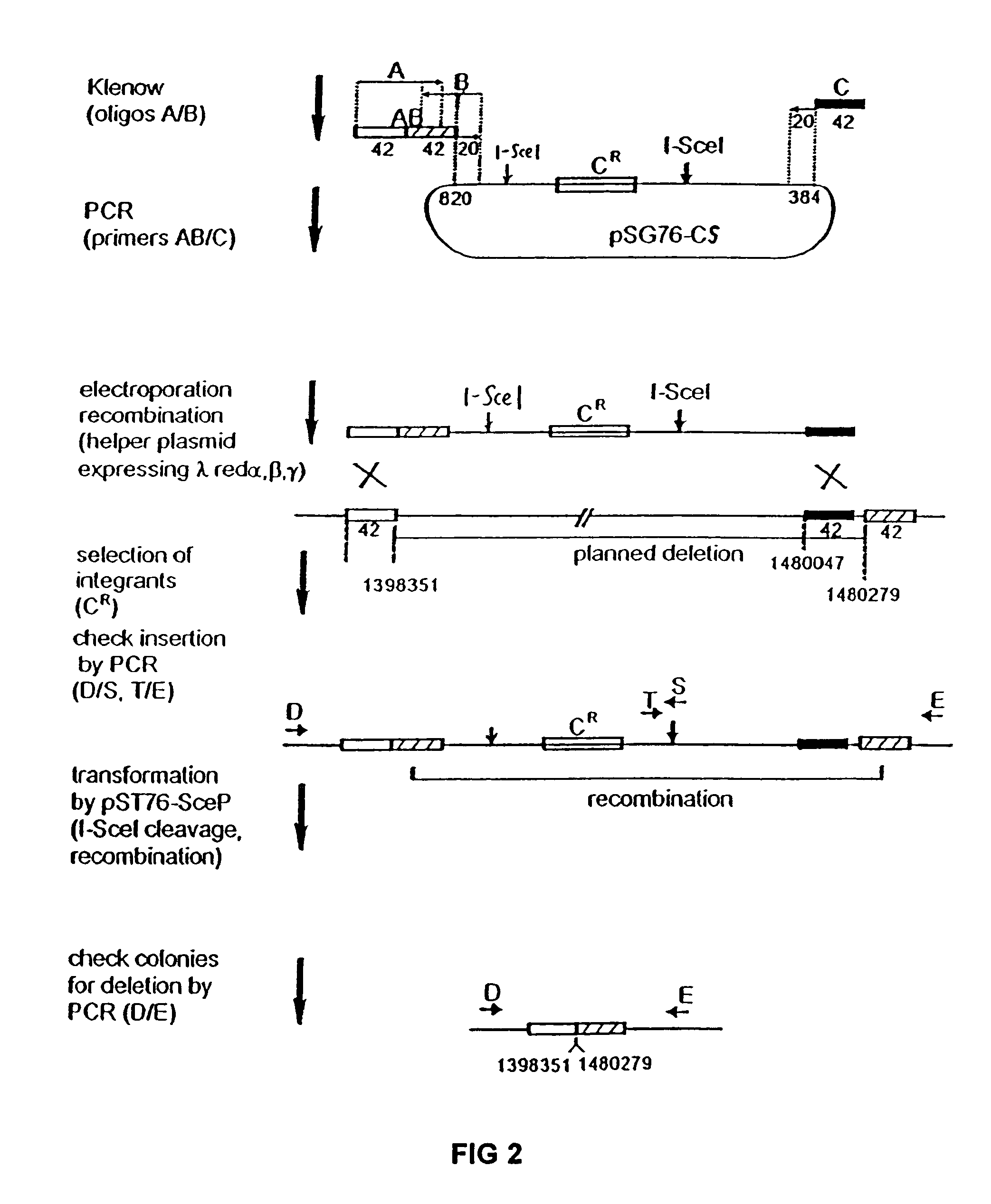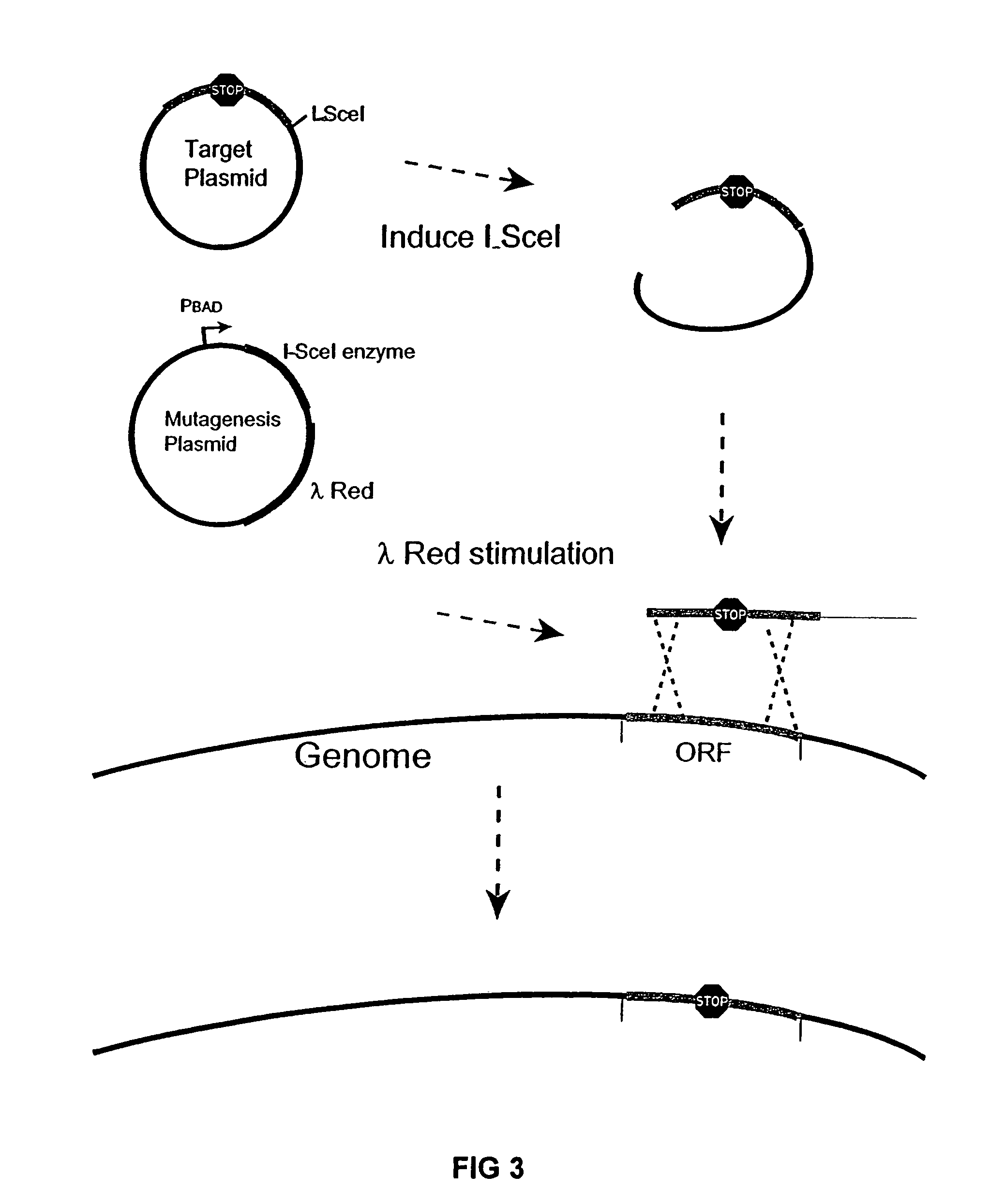Bacteria with reduced genome
a genome and bacteria technology, applied in the field of bacteria with reduced genomes, can solve the problems of reducing the purification cost of recombinant protein purification, affecting the production or purification of desired protein products of engineered bacteria, and affecting the introduction and maintenance of plasmid dna, so as to achieve simplified product purification process and production process. the effect of efficiency
- Summary
- Abstract
- Description
- Claims
- Application Information
AI Technical Summary
Benefits of technology
Problems solved by technology
Method used
Image
Examples
examples
Plasmids
[0083]The plasmid used for PCR construction of the artificial inserted DNA sequence was designated pSG76-CS, (GenBank Accession No. AF402780), which was derived from pSG76-C (Posfai, G. et al., J. Bacteriol. 179: 4426-4428 (1997)) by inserting a second I-SceI site. The second I-SceI site was obtained by the PCR-mediated insertion of a second I-SceI recognition site into pSG76-C, downstream of the NotI site. The two I-SceI sites are in opposite direction.
[0084]The pBADαβγ plasmid was used for enhancing recombination of linear DNA-fragments into the genome. This plasmid was described in Muyrers, J. P. P. et al., Nucl. Acids Res. 27:1555-1557 (1999).
[0085]The PKSCU1 plasmid (GenBank Accession No. AF402779), for expressing I-SceI, was derived from pSG76-K (Posfai, G. et al., J. Bacteriol. 179: 4426-4428 (1997)) and pUC19RP12 (Posfai, G. et al., Nucl. Acids Res. 27: 4409-4415 (1999)). The XbaI-NotI fragment (carries the Kan gene; the NotI end was blunted by Klenow polymerase) of ...
PUM
 Login to View More
Login to View More Abstract
Description
Claims
Application Information
 Login to View More
Login to View More - R&D
- Intellectual Property
- Life Sciences
- Materials
- Tech Scout
- Unparalleled Data Quality
- Higher Quality Content
- 60% Fewer Hallucinations
Browse by: Latest US Patents, China's latest patents, Technical Efficacy Thesaurus, Application Domain, Technology Topic, Popular Technical Reports.
© 2025 PatSnap. All rights reserved.Legal|Privacy policy|Modern Slavery Act Transparency Statement|Sitemap|About US| Contact US: help@patsnap.com



